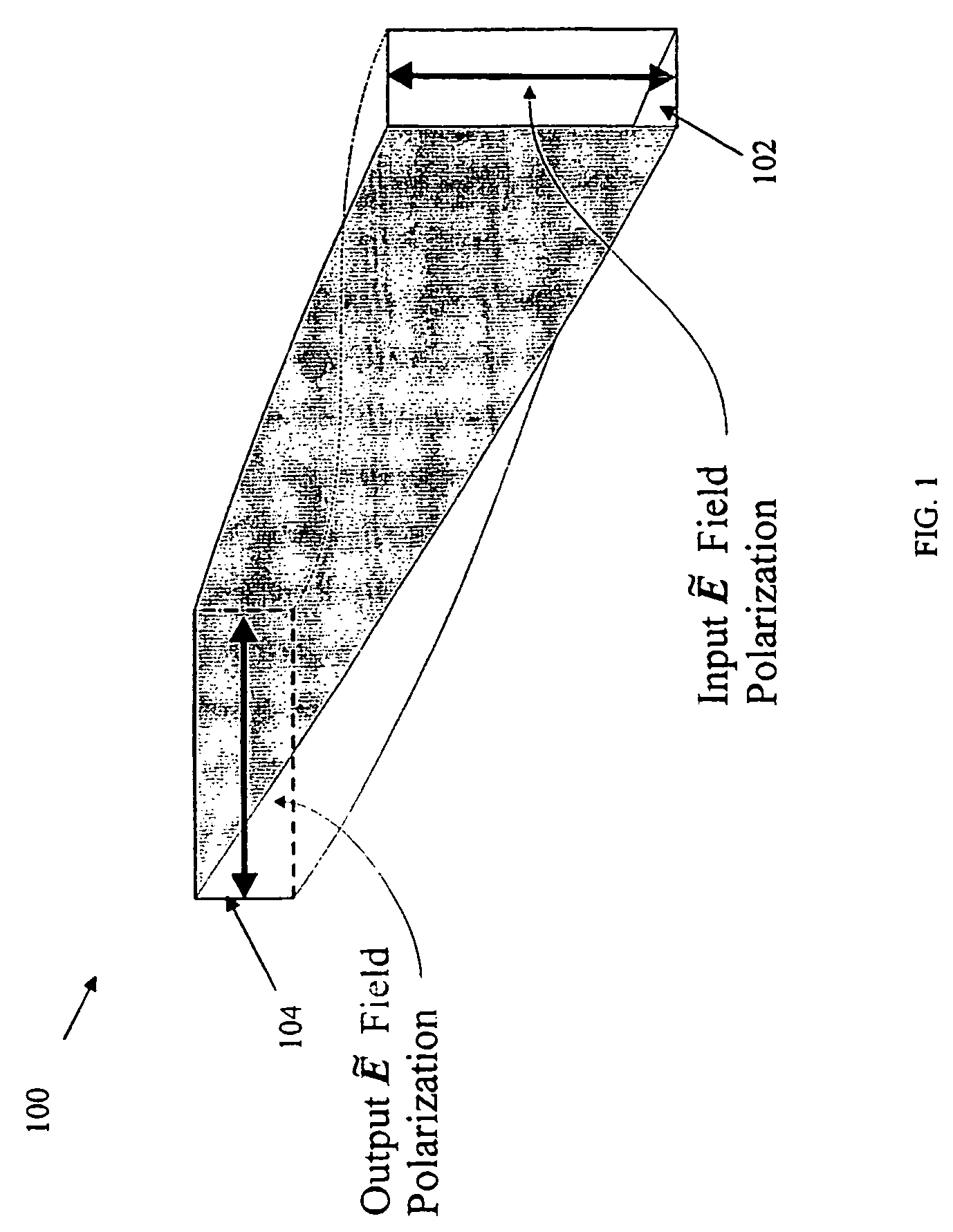Integrated optic polarization converter based on structural chirality
a technology of optical polarization converter and structural chirality, applied in the field of integrated optic polarization converter, can solve the problems of polarization dependent performance, cumbersome implementation of bulk optics, and difficult if not impossible to compensate both simultaneously
- Summary
- Abstract
- Description
- Claims
- Application Information
AI Technical Summary
Benefits of technology
Problems solved by technology
Method used
Image
Examples
Embodiment Construction
[0027]The mode structure for a general rectangular dielectric waveguide consists of a minimum of two guided electromagnetic modes, a TE (or quasi-TE) mode and a TM (or quasi-TM) mode, and an infinite sum of unguided (or radiation) electromagnetic modes. If a rectangular waveguide is rotated by 90°, its mode structure is similarly rotated with the TE mode becoming the TM mode and vice-versa. Therefore, a smooth transition between a rectangular waveguide and its rotated counterpart should enable polarization conversion through mode evolution. However, any perturbation to the initial structure will induce coupling between the modes. For a mode evolution approach to work, power exchange between the modes must be inhibited.
[0028]A way to transition between a rectangular waveguide and its rotated counterpart is to twist the initial structure. FIG. 1 is a schematic diagram of an adiabatically twisted dielectric waveguide 100 having an input 102 and output 104. The twisting of the waveguide...
PUM
| Property | Measurement | Unit |
|---|---|---|
| length | aaaaa | aaaaa |
| length | aaaaa | aaaaa |
| lengths | aaaaa | aaaaa |
Abstract
Description
Claims
Application Information
 Login to View More
Login to View More - R&D
- Intellectual Property
- Life Sciences
- Materials
- Tech Scout
- Unparalleled Data Quality
- Higher Quality Content
- 60% Fewer Hallucinations
Browse by: Latest US Patents, China's latest patents, Technical Efficacy Thesaurus, Application Domain, Technology Topic, Popular Technical Reports.
© 2025 PatSnap. All rights reserved.Legal|Privacy policy|Modern Slavery Act Transparency Statement|Sitemap|About US| Contact US: help@patsnap.com



